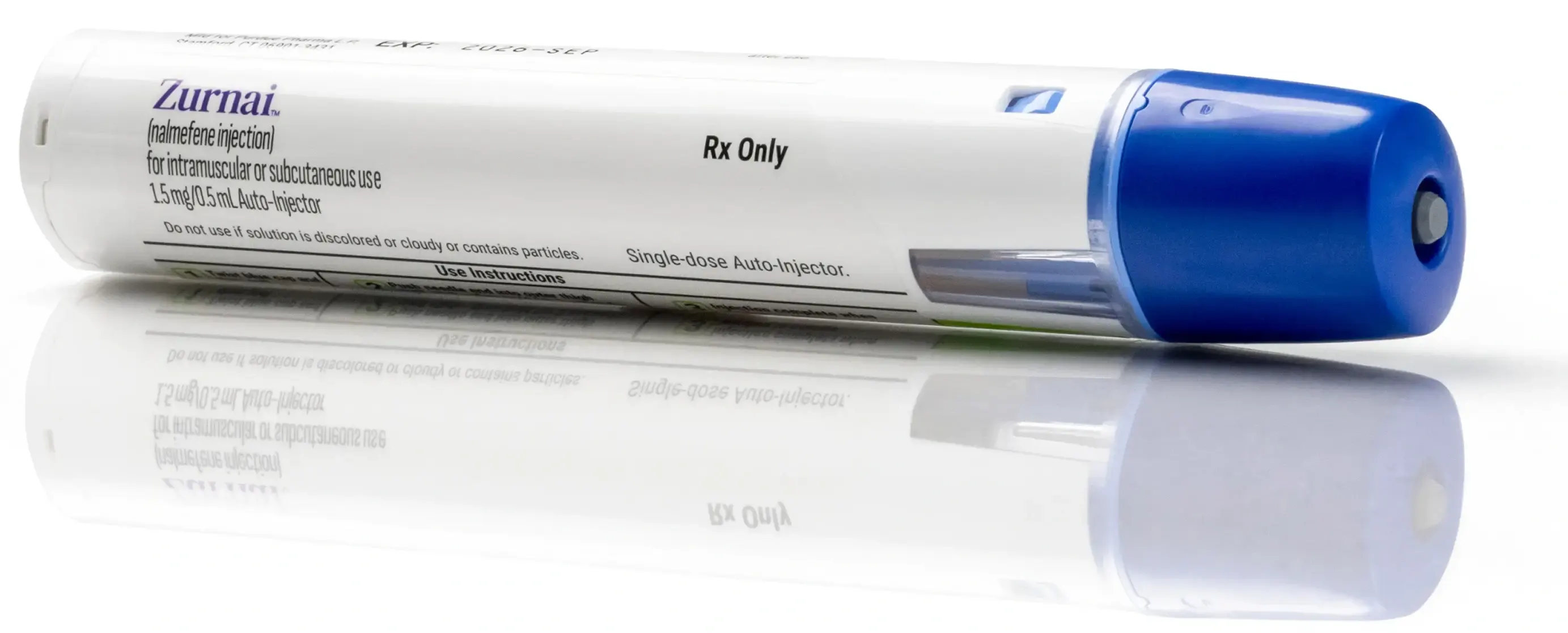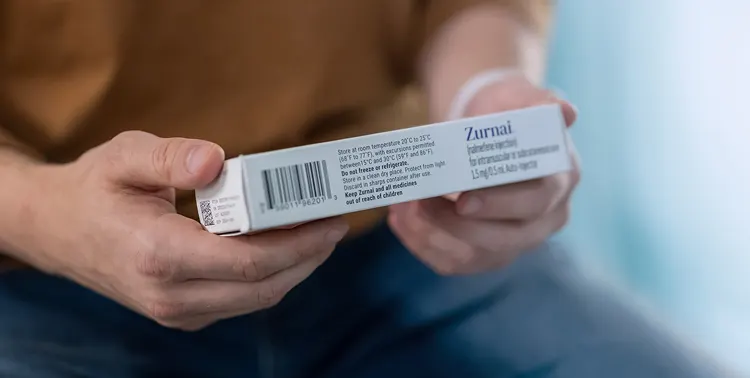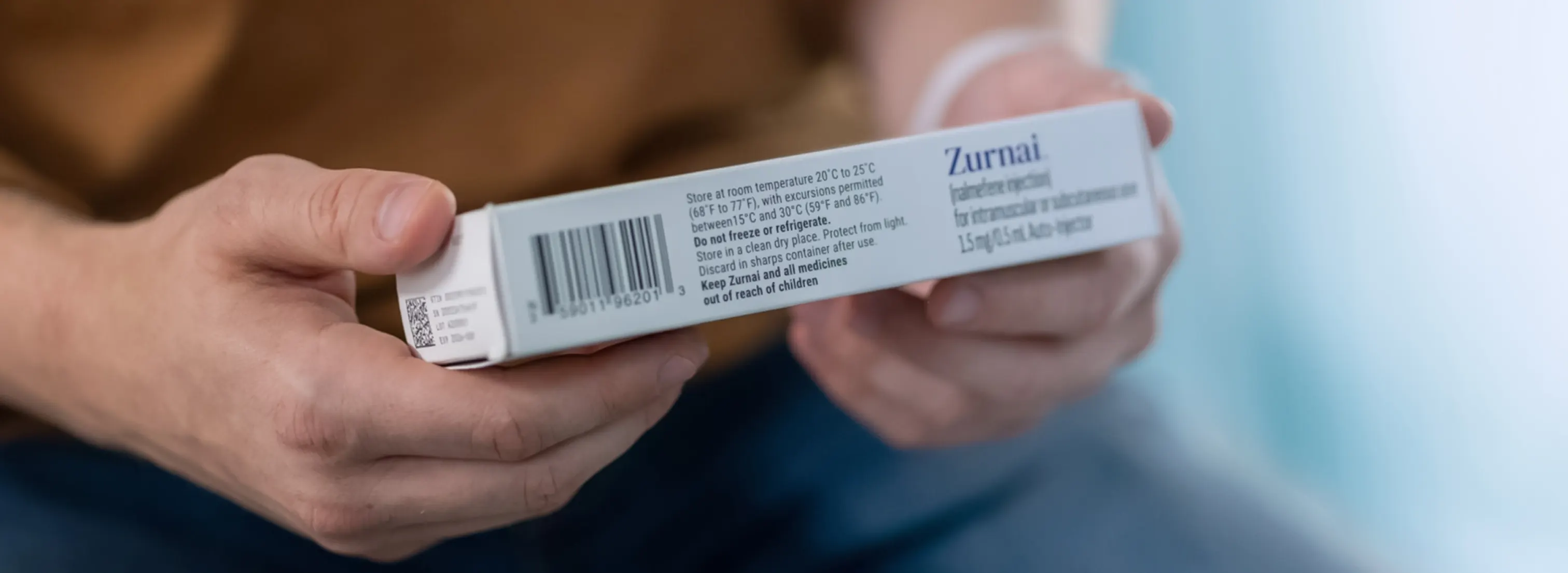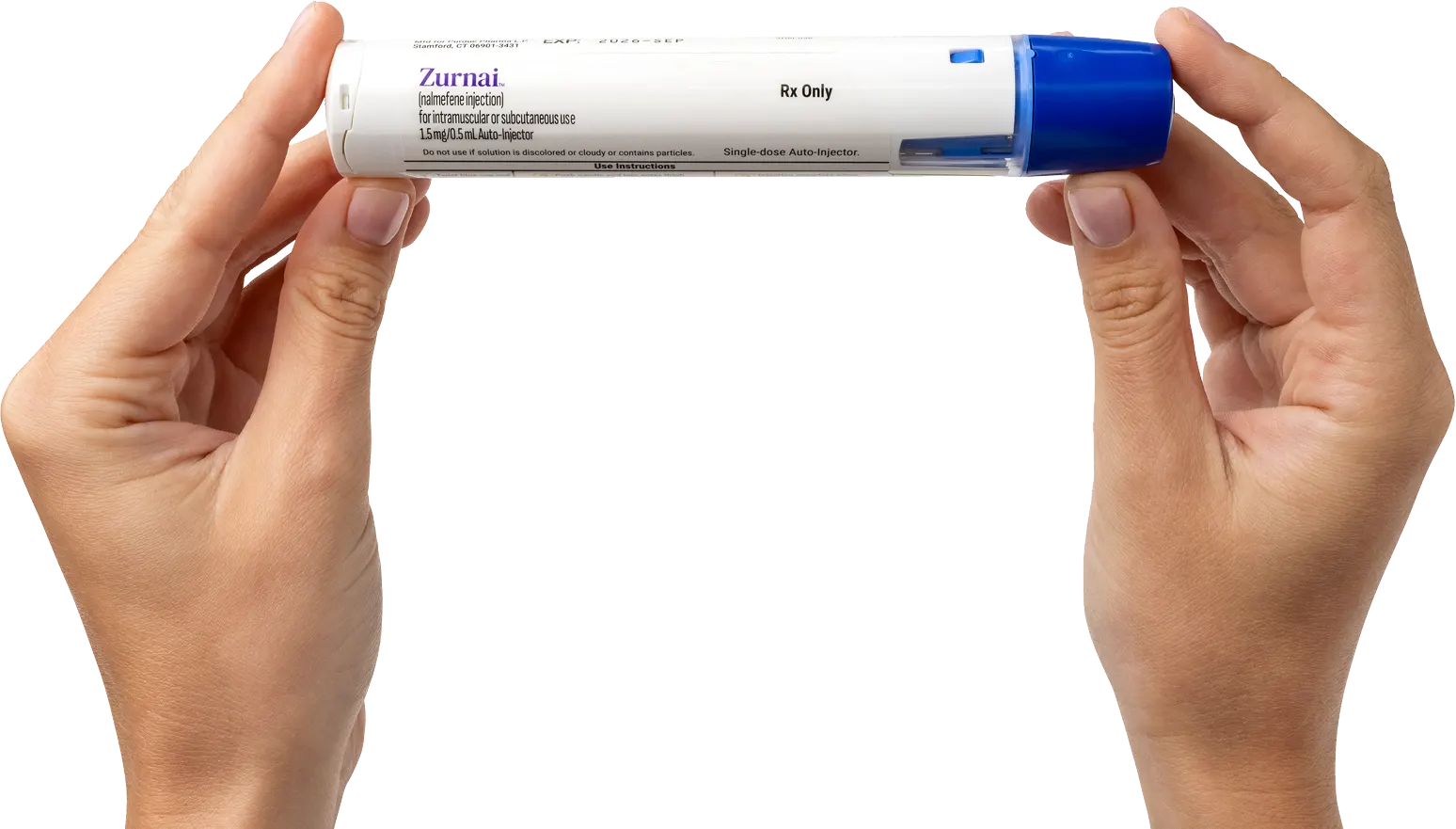additional support they may need
Choose ZURNAI (nalmefene injection)—the first and only nalmefene auto-injector 1
 Not actual size.
Not actual size. Not actual size.
Not actual size.In a pharmacodynamic study conducted in an experimental setting, time to onset of reversal of respiratory depression was observed between 2.5 to 5 minutes. Full recovery of respiratory drive was noted between 5 and 15 minutes after ZURNAI administration.1
In a pharmacokinetic study of 24 healthy adult volunteers, mean terminal elimination half-life was 9.07 hours.1
Instruct patients and their family members or caregivers to become familiar with all the information contained in the carton as soon as they receive ZURNAI and to read the Instructions for Use that come with ZURNAI.
While opioid overdose deaths have declined from their peak, synthetic opioids continue to drive the evolving epidemic.2
ZURNAI works fast and has a long half-life. A pharmacodynamic study assessed the ability of ZURNAI to reverse opioid-induced respiratory depression, and a pharmacokinetic study characterized its absorption and elimination.1
Mean terminal elimination half-life was 9.07 hours in a pharmacokinetic study of 24 healthy adult volunteers.1

 Actor portrayal.
Actor portrayal.ZURNAI is designed to be used by anyone in the community. Key features of the ZURNAI Auto-Injector make it an important option for opioid overdose reversal.
 Not actual size.
Not actual size.ZURNAI is indicated for the emergency treatment of known or suspected opioid overdose induced by natural or synthetic opioids in adults and pediatric patients aged 12 years and older, as manifested by respiratory and/or central nervous system depression.
ZURNAI is intended for immediate administration as emergency therapy in settings where opioids may be present.
ZURNAI is not a substitute for emergency medical care.
CONTRAINDICATIONS
ZURNAI is contraindicated in patients known to be hypersensitive to nalmefene hydrochloride or to any other ingredients in the product.
WARNINGS AND PRECAUTIONS
Risk of Recurrent Respiratory and Central Nervous System Depression
A recurrence of respiratory depression is possible, therefore, keep the patient under continued surveillance and administer repeat doses of ZURNAI if necessary, using a new auto-injector with each dose while awaiting emergency medical assistance.
Risk of Limited Efficacy with Partial Agonists or Mixed Agonist/Antagonists
Reversal of respiratory depression by partial agonists or mixed agonists/antagonists such as buprenorphine and pentazocine, may be incomplete. Repeat doses of ZURNAI may be required.
Precipitation of Severe Opioid Withdrawal
The use of ZURNAI in patients who are opioid dependent may precipitate opioid withdrawal.
Abrupt postoperative reversal of opioid depression may result in adverse cardiovascular (CV) effects. These events have primarily occurred in patients who had preexisting CV disorders or received other drugs that may have similar adverse CV effects. Monitor these patients closely in an appropriate healthcare setting after use of ZURNAI.
In neonates, opioid withdrawal may be
Risk of Opioid Overdose from Attempts to Overcome the Blockade
Attempts to overcome opioid withdrawal symptoms caused by opioid antagonists with high or repeated doses of exogenous opioids may lead to opioid intoxication and death.
ADVERSE REACTIONS
Most common adverse reactions (> 5%) are feeling hot, nausea, headache, dizziness, chills, vomiting, allodynia, palpitations, tinnitus, ear discomfort, feeling abnormal, burning sensation, hot flush, and irritability.
USE IN SPECIFIC POPULATIONS
Pregnancy
An opioid overdose is a medical emergency and can be fatal for the pregnant woman and fetus if left untreated. Treatment with ZURNAI for opioid overdose should not be withheld because of potential concerns regarding the effects of ZURNAI in the fetus.
Pediatric Use
The safety and effectiveness of ZURNAI for the emergency treatment of known or suspected opioid overdose, as manifested by respiratory and/or central nervous system depression, have not been established in pediatric patients younger than 12 years of age.
Geriatric Use
Clinical studies of nalmefene hydrochloride injection did not include sufficient number of subjects aged 65 and over to determine whether they respond differently from younger subjects.
Please read
To report SUSPECTED ADVERSE REACTIONS, contact Purdue Pharma L.P. at 1 888-726-7535, option 2, or FDA at 1-800-FDA-1088 or .
Intended for healthcare professionals of the United States of America only.
References: 1. ZURNAI™ (nalmefene injection) Auto-Injector Full Prescribing Information. Purdue Pharma L.P.; 2024. 2. Centers for Disease Control and Prevention. Provisional drug overdose data. CDC. https://www.cdc.gov/nchs/nvss/vsrr/drug-overdose-data.htm. Published August 14, 2024. Accessed May 30, 2025.